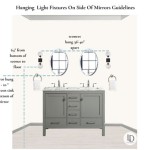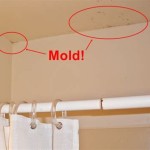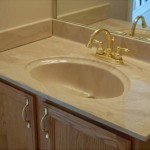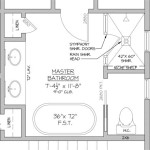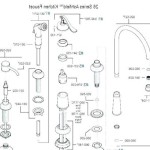What to Use to Clean Mould Off Bathroom Walls
Mould growth in bathrooms is a common problem due to the consistently high humidity and moisture levels present in these environments. These conditions, coupled with poor ventilation, create an ideal breeding ground for mould and mildew on surfaces like walls, tiles, and grout. Effective removal of mould is crucial not only for aesthetic reasons but also for maintaining a healthy indoor environment. Mould spores can trigger allergic reactions, respiratory problems, and other health issues, particularly in individuals with sensitivities or pre-existing conditions. Therefore, understanding the appropriate cleaning methods and solutions for mould removal is essential for homeowners and renters alike.
This article will explore various cleaning agents and methods suitable for removing mould from bathroom walls, emphasizing safety precautions and preventative measures to minimize the likelihood of future growth. It will delve into the characteristics of different cleaning solutions, their effectiveness in tackling mould, and the steps involved in their proper application. Furthermore, the article will highlight the importance of identifying the underlying cause of the mould problem and addressing it to ensure long-term mould control.
Identifying and Addressing the Source of Moisture
Before embarking on the actual process of cleaning mould, it is paramount to identify and rectify the source of the moisture that promotes its growth. Cleaning the mould without addressing the underlying issue will only provide a temporary solution, as the mould will inevitably return. Common sources of moisture in bathrooms include leaky pipes, dripping faucets, inadequate ventilation, and condensation. Inspecting plumbing fixtures, including supply lines and drainpipes, for any signs of leaks is a critical first step. Repairing these leaks promptly will help significantly reduce the moisture levels in the bathroom.
Ventilation plays a crucial role in removing excess moisture from the air after showering or bathing. Ensure that the bathroom exhaust fan is functioning correctly and is used regularly during and after water usage. If the bathroom lacks an exhaust fan, consider installing one to improve air circulation. Opening windows after showering or bathing can also help to ventilate the room and reduce humidity. Furthermore, check for any external sources of water intrusion, such as roof leaks or wall cracks, which may contribute to moisture buildup in the bathroom. Addressing these issues will prevent water from seeping into the walls and creating a favorable environment for mould growth. Regular inspections for moisture intrusion are crucial for preventing mould problems before they become significant.
Effective Cleaning Solutions for Mould Removal
Several cleaning solutions are effective for removing mould from bathroom walls. The choice of solution often depends on the severity of the mould growth and the type of surface being cleaned. Here are some commonly used and effective options:
Bleach Solution
A diluted bleach solution is a widely used and readily available option for killing mould. The recommended concentration is typically a ratio of 1 part bleach to 10 parts water. Always wear appropriate protective gear, including gloves, eye protection, and a mask, when working with bleach, as it can irritate the skin, eyes, and respiratory system. To apply the bleach solution, spray it directly onto the affected areas of the wall, ensuring that the mould is thoroughly saturated. Allow the solution to sit on the surface for approximately 10-15 minutes to allow the bleach to effectively kill the mould spores. After the waiting period, scrub the treated areas with a stiff-bristled brush to remove the dead mould. Rinse the wall thoroughly with clean water to remove any remaining bleach residue. It is crucial to ensure adequate ventilation during and after the cleaning process to dissipate any bleach fumes. While effective, bleach can discolor some surfaces, so it is essential to test the solution on an inconspicuous area first to ensure it does not damage the wall's finish. Remember that bleach only addresses surface mould and may not penetrate porous materials to kill mould at the root.
Vinegar
White vinegar is a natural and less harsh alternative to bleach for mould removal. Vinegar is acidic and can effectively kill many common types of mould. To use vinegar, pour undiluted white vinegar into a spray bottle and apply it directly onto the mouldy surfaces. Allow the vinegar to sit on the mould for at least an hour before scrubbing the area with a brush or sponge. After scrubbing, rinse the surface with clean water and allow it to dry thoroughly. Vinegar has a distinctive odor, but it dissipates relatively quickly. Like bleach, vinegar is primarily effective for surface mould and may not penetrate porous materials. However, it is a safer and more environmentally friendly option, particularly for individuals sensitive to chemicals. Vinegar can also be used as a preventative measure by spraying it onto bathroom walls after showering to inhibit mould growth.
Hydrogen Peroxide
Hydrogen peroxide is another effective and relatively safe alternative to bleach. It is a mild antiseptic and can kill mould spores on various surfaces. To use hydrogen peroxide, pour a 3% concentration solution into a spray bottle and apply it directly to the mouldy areas. Allow the hydrogen peroxide to sit on the surface for approximately 10-15 minutes before scrubbing the area with a brush or sponge. Rinse the surface thoroughly with clean water and allow it to dry. Hydrogen peroxide is less likely to discolor surfaces compared to bleach, but it is still advisable to test it on an inconspicuous area first. Hydrogen peroxide is a good option for treating smaller areas of mould growth and can also be used for preventative maintenance.
Baking Soda
Baking soda is a mild alkali that can be used to kill mould and absorb moisture. It is a very safe and non-toxic option, making it suitable for households with children and pets. To use baking soda, create a paste by mixing it with water. Apply the paste to the mouldy areas and allow it to sit for several minutes. Scrub the area with a brush or sponge and then rinse with clean water. Baking soda can also be used as a preventative measure by sprinkling it on damp surfaces to absorb moisture and inhibit mould growth. Additionally, a solution of baking soda and water can be sprayed onto bathroom walls after showering to prevent mould from forming. Although it may not be as potent as bleach or vinegar, baking soda is a gentle and effective option for controlling mould growth.
Commercial Mould Removers
Several commercially available mould removers are specifically designed for eliminating mould and mildew. These products often contain stronger chemicals than household solutions and can be more effective for tackling stubborn mould growth. When using commercial mould removers, it is crucial to follow the manufacturer's instructions carefully and wear appropriate protective gear, including gloves, eye protection, and a mask. Ensure adequate ventilation during and after application, as these products may release fumes. Some commercial mould removers also contain ingredients that inhibit future mould growth, providing a longer-lasting solution. However, it is important to research and choose a product that is safe for use on the specific type of surface being cleaned to avoid damage or discoloration. Always test the product on an inconspicuous area first to ensure compatibility.
Key Steps in the Mould Cleaning Process
Regardless of the cleaning solution chosen, following the proper steps is essential for effective mould removal and preventing its recurrence. Here is a step-by-step guide to cleaning mould from bathroom walls:
Preparation:
Before starting, gather all necessary cleaning supplies, including the chosen cleaning solution, gloves, eye protection, a mask, a stiff-bristled brush, a sponge, clean water, and towels. Ensure the bathroom is well-ventilated by opening windows or turning on the exhaust fan.Application:
Apply the cleaning solution liberally to the mouldy areas of the wall, ensuring that the mould is thoroughly saturated. Allow the solution to sit on the surface for the recommended amount of time, as specified for each solution.Scrubbing:
Use a stiff-bristled brush or sponge to scrub the affected areas vigorously, removing the dead mould and any remaining residue. For stubborn mould, you may need to repeat the scrubbing process.Rinsing:
Rinse the wall thoroughly with clean water to remove any remaining cleaning solution and mould debris. Use a sponge or cloth to wipe down the surface, ensuring that all traces of the cleaning solution are removed.Drying:
Allow the wall to dry completely. You can use a clean towel to wipe down the surface and speed up the drying process. Ensure that the bathroom remains well-ventilated until the wall is completely dry.Prevention:
After cleaning, consider applying a mould-resistant paint or sealant to the wall to inhibit future mould growth. Regularly clean and ventilate the bathroom to prevent moisture buildup and mould recurrence.
By following these steps diligently, it is possible to effectively remove mould from bathroom walls and maintain a healthy and hygienic environment.

How To Remove Mold From Walls True Value

Bathroom Diy How To Remove Mould

Kill Bathroom Mould Without Bleach Electrodry Blogs

Bathroom Ceiling Mold Removal When To Clean Call Branch Environmental

How To Clean Mould Off Walls Very Effective And Safe Way Kill Prevent Express Co

Cleaning Mold From Bathroom Ceilings Like A Pro Lovetoknow

How To Remove Mould From Your Bathroom Ceiling Cleanipedia Za

How To Get Rid Of Mold In Bathroom 2024 Tips From Puroclean

Black Mold In The Shower How To Clean It Kitchen With Matt

The Ultimate Guide On How To Clean And Get Rid Of Mold Pro Housekeepers
Related Posts
